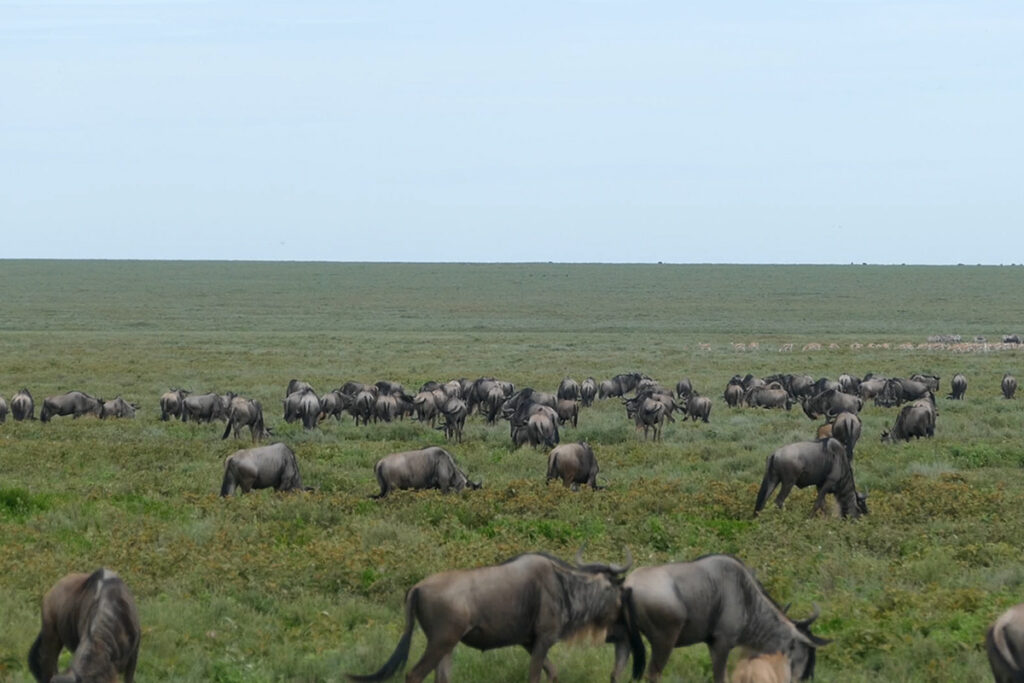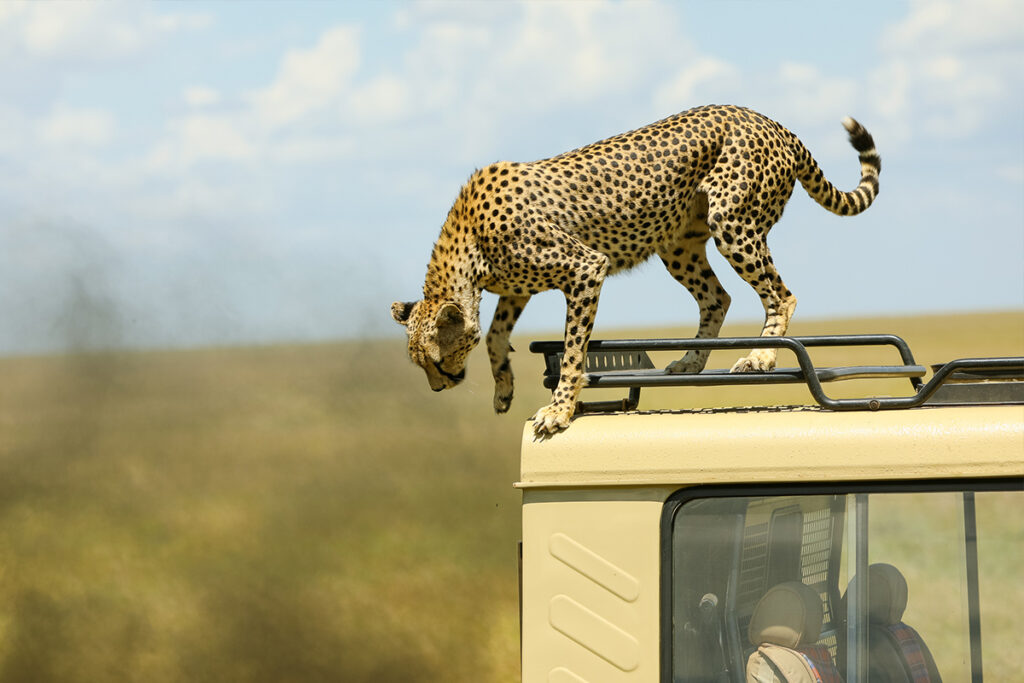Standing tall at 19,341 feet, Mount Kilimanjaro is not only the highest mountain in Africa but also presents an alluring challenge to climbers from around the globe. But did you know that less than half of the climbers actually make it to the summit? To many, reaching the peak is a testament of endurance and adaptability in the face of nature’s unpredictability.
For a successful climb, it’s essential to understand altitude acclimatization, which has been crucial since the first recorded ascent in 1889. Statistically, the longer routes, such as the Lemosho or Northern Circuit, which offer gradual acclimatization, boast higher success rates. By taking a more extended route, climbers significantly increase their chances of reaching Uhuru Peak while minimizing the risk of altitude sickness.
- Select the right season and route to enhance acclimatization.
- Invest in quality gear and clothing for varying temperatures.
- Conduct physical training to build stamina and endurance.
- Hydrate adequately and prioritize nutrition during the climb.
- Hire experienced guides for safety and valuable insights.

Top Tips for Climbing Kilimanjaro Successfully
Climbing Kilimanjaro can be a thrilling adventure, but preparation is essential. Choosing the right season can make a significant difference in your experience. Most climbers prefer the dry months of January to March or June to October. These periods offer better weather and clearer views of the stunning landscapes. However, booking in advance during these times is crucial due to high demand.
Acclimatization to altitude is one of the biggest challenges on Kilimanjaro. Taking it slow and staying hydrated helps your body adjust. The more days you spend on the mountain, the greater your chance of reaching the summit. Popular routes like the Lemosho or Machame route allow for gradual altitude gain. Oxygen levels are lower at high altitudes, making it vital to pace yourself.
Training before your climb is a key advantage. Building your cardio and overall fitness boosts endurance during the trek. Long walks and hikes at home simulate the trail conditions. Prioritizing leg strength and stamina can improve your performance on tough terrains. Weeks of preparation can ease the physical demands you’ll face on the mountain.
Don’t overlook the importance of gear. Quality clothing can shield you from extreme weather at high altitudes. Here’s a list of essential items to pack:
- Waterproof jacket and pants
- Hiking boots with good ankle support
- Warm layers, including gloves and hats
- High SPF sunscreen and lip balm
- Headlamp and spare batteries
Climbing Kilimanjaro | 9 THINGS You Need To Know
1. Choose the Right Season for the Climb
When planning your climb, selecting the best season is crucial. Kilimanjaro features two primary seasons for climbing: the dry season and the rainy season. January to mid-March and June to October are the most favorable periods. These months offer clearer skies and more predictable weather, enhancing your climbing experience. It’s also easier to navigate trails and enjoy the breathtaking views.
Climbers should avoid the rainy seasons of April to May and November. These times bring heavy rains, making the trails slippery and more challenging. Additionally, the increased cloud cover can obscure the stunning scenery. If you prefer fewer crowds, however, the rainy season might still appeal. You can enjoy more solitude on the mountain.
Temperature variations on Kilimanjaro are another key consideration. During the dry season, daytime temperatures are generally pleasant. However, it gets significantly colder as you ascend, especially at night. Making sure you have the right gear for these temperature shifts is vital. Here’s what to expect based on the season:
| Season | Daytime Temperature | Nighttime Temperature |
|---|---|---|
| Dry Season (June to October) | 20-30°C (68-86°F) | -7 to -10°C (19-14°F) |
| Rainy Season (April to May) | 15-25°C (59-77°F) | -5 to -7°C (23-19°F) |
Booking your climb during the high season ensures better weather but can mean more people on the trails. Planning ahead and securing permits early is wise to avoid disappointment. Each season offers a distinct experience, and choosing the right one can significantly enhance your Kilimanjaro adventure.
2. Select an Appropriate Route for Your Ability
Choosing the right route on Kilimanjaro depends largely on your fitness level and hiking experience. Each path offers different challenges, scenery, and acclimatization times. The Marangu Route, known as the “Coca-Cola route,” is shorter and considered easier but has less time for acclimatization. Conversely, the Lemosho Route gives more time to adjust to the altitude with longer trekking days. This makes it a popular choice for those seeking a higher success rate in reaching the summit.
For seasoned hikers, the Umbwe Route is a good fit due to its steep and direct path. Though demanding, it rewards climbers with fewer crowds and more adventure. Beginners might find the gradual slopes of the Rongai Route more manageable. This route approaches from the north, offering a unique view of the mountain. The diverse routes ensure that there’s an option suitable for every climber’s capability.
The duration and difficulty of each route differ significantly. To help you understand better:
| Route | Duration (Days) | Difficulty |
|---|---|---|
| Marangu | 5-6 | Moderate |
| Lemosho | 7-8 | Challenging |
| Umbwe | 5-7 | Very Difficult |
| Rongai | 6-7 | Moderate |
Also consider factors like the scenic views and overall trekking experience each route offers. Ask yourself if you prefer lush forests, open views, or less crowded paths. Remember, choosing the right path can profoundly affect your experience on Kilimanjaro. Planning wisely increases your chances of reaching the summit successfully and enjoying the journey.
3. Prioritize Proper Acclimatization
Climbing Kilimanjaro presents a significant challenge due to high altitude, making acclimatization essential. As you ascend, the oxygen level drops, and your body needs time to adapt. Rushing the climb increases the risk of altitude sickness, which can be serious. Therefore, choosing a longer route that allows gradual ascent is a smart strategy. This approach gives your body more time to adjust.
Listening to your body’s signals during the climb is crucial for a successful journey. Symptoms like headaches, nausea, and dizziness can indicate altitude sickness. Taking preventive steps, such as drinking plenty of water and eating nutritious meals, helps. If symptoms worsen, descent is necessary to prevent more severe issues. Pay attention and respond promptly to how you feel.
Climbing high during the day and sleeping lower at night is a known technique to aid acclimatization. Many climbers use this method by incorporating extra hikes during the day. This strategy improves your body’s ability to adjust to reduced oxygen levels. Additionally, maintaining a steady pace lessens the strain on your body. Here’s a simple plan to follow:
- Day 1: Reach higher ground, return to a lower camp
- Day 2: Continue gradual ascent, with appropriate rest stops
- Day 3: Repeat climb high, sleep low strategy
Medications like acetazolamide, commonly known as Diamox, are sometimes used to help acclimatization. It can decrease the intensity of symptoms but should be taken under medical advice. Consulting with a healthcare professional before starting the climb is wise. Their guidance ensures you have the best chance of reaching the summit safely. Being well-prepared enhances your journey’s success and enjoyment.
Acclimatization isn’t just physical; preparing mentally is also important. A positive mindset and staying calm under pressure are valuable assets. Encouraging fellow climbers boosts morale and motivates everyone. Sharing experiences and tips with the team add to the adventure’s enjoyment. Being prepared both physically and mentally makes the climb more rewarding.
4. Invest in Quality Gear and Clothing
Investing in top-notch gear and clothing is vital for a successful Kilimanjaro climb. High-quality equipment ensures comfort and safety amid changing weather conditions. Layers are essential as temperatures shift dramatically from the base to the summit. Start with moisture-wicking base layers, add insulating mid-layers, and top off with a waterproof outer shell. Proper layering keeps you warm and dry during the ascent.
Choosing the right footwear can make or break your climb. Sturdy, comfortable hiking boots with good ankle support are indispensable. Ensure they are well-broken in to prevent blisters. Pair them with thermal socks to keep your feet warm. Investing in the right boots boosts both safety and comfort on the trails.
Accessories also play a significant role in protecting against harsh conditions. Items like sun hats, sunglasses, and gloves are not to be overlooked. High-altitude sun exposure can lead to severe sunburn, making sunscreen and lip balm necessities. Here are some items to consider packing:
- Insulated gloves
- Wide-brimmed hat
- Polarized sunglasses
- High-SPF sunscreen
Besides clothing, essential gear includes trekking poles and a reliable backpack. Trekking poles provide stability and take pressure off your joints, especially on steep sections. A well-fitted backpack with adjustable straps distributes weight evenly. Ensure it has enough capacity for your gear without being too bulky. A functional pack contributes to a more manageable and enjoyable climb.
Lastly, don’t underestimate the importance of hydration systems. Staying hydrated is crucial for maintaining energy levels at high altitudes. A hydration pack or bottle within easy reach encourages regular drinking. Choose a system that works best for your needs and keep it accessible. These thoughtful investments in gear ensure your trek is both safe and pleasant.
5. Train Adequately in Advance
Adequate training before embarking on your Kilimanjaro climb is crucial for success. Building both cardiovascular strength and endurance prepares you for the physical demands of the trek. Start your training routine several months ahead of your journey. Incorporate a mix of activities like hiking, running, and cycling. This varied approach ensures your body is well-equipped to handle the climb.
Hiking is one of the best ways to train, as it closely mimics the actual experience. Aim to go on long hikes carrying a backpack with added weight. This simulates the conditions you’ll face, helping your body adapt to carrying gear. Increasing the distance and altitude gradually also aids in building stamina. Weekend hikes are an excellent way to combine training with adventure.
Strength training is essential for supporting your muscles and joints during the climb. Focus on exercises that build leg strength, such as squats and lunges. Core stability exercises, like planks, are also important. A strong core helps you maintain balance and reduces the risk of injury. Incorporate these exercises into your routine for a comprehensive workout plan.
Flexibility and balance training shouldn’t be overlooked. Activities like yoga improve flexibility, making your movements more fluid and reducing muscle stiffness. Balance exercises enhance your stability on uneven terrain. Including these practices in your regimen can significantly benefit your overall coordination. The combination of strength, balance, and flexibility makes you more resilient on the trail.
Consistency is key to making the most of your training regimen. Stick to a schedule that balances your workouts with adequate rest. Avoid overtraining, as rest days are important for muscle recovery and preventing burnout. Keeping a training log can help you track progress and stay motivated. A well-rounded and consistent training plan is your best ally in conquering Kilimanjaro.
Understanding Altitude Sickness and Prevention
Altitude sickness, or acute mountain sickness (AMS), can occur when you climb to high elevations quickly. It happens because the body has less oxygen to work with at higher altitudes. Symptoms include headaches, nausea, dizziness, and fatigue. These can start from as low as 8,000 feet above sea level. Recognizing these signs early is crucial for prevention and treatment.
Preventing altitude sickness involves taking gradual steps during your ascent. Spending extra days on the mountain allows your body to acclimate to the lower oxygen levels. Drinking plenty of water is key to keeping symptoms at bay. Hydration helps your body cope with the altitude changes more effectively. Staying well-nourished with balanced meals also supports acclimatization.
Medications like Diamox can aid in prevention but should be used under medical guidance. This drug helps increase breathing rate and improves oxygen intake in the blood. However, it might have side effects like tingling sensations or frequent urination. Speaking with a healthcare provider before starting medication ensures safety and effectiveness. Self-medication is not recommended.
If symptoms persist or worsen, descending immediately is necessary to avoid severe complications. High-altitude cerebral edema (HACE) and high-altitude pulmonary edema (HAPE) are life-threatening conditions that require urgent attention:
- HACE: Swelling of the brain due to low oxygen
- HAPE: Fluid accumulation in the lungs from altitude stress
A slower pace and spending more time acclimatizing can significantly reduce risks associated with AMS. Pay attention to how your body reacts and communicate any discomforts with your group or guide promptly. Listening to experienced climbers’ advice adds an extra layer of safety during your trek.
Importance of Hydration and Nutrition During the Climb
Maintaining proper hydration is a cornerstone of successfully climbing Kilimanjaro. The high altitude and physical exertion increase the body’s demand for fluids. Drinking enough water prevents dehydration, which can cause headaches, dizziness, and fatigue. Aim for at least 3 to 4 liters of water daily. Carrying a water bottle or hydration pack ensures you can sip regularly during the trek.
Nutrition is equally important to fuel your body during the demanding climb. Eating meals rich in carbohydrates provides the necessary energy for long distances. Include pasta, rice, and breads in your diet. Protein sources like lean meats and legumes help repair muscles. Keeping snacks handy is also beneficial for maintaining energy levels throughout the day.
Balancing electrolyte intake is crucial when staying hydrated at high altitudes. Adding electrolyte tablets or drinks to your water replaces essential salts lost through sweat. These electrolytes support nerve function and prevent muscle cramps. Consuming fruits like bananas can naturally boost electrolyte levels. Proper balance keeps your body functioning optimally on the mountain.
Some climbers may experience a reduced appetite at higher elevations. However, eating regularly is important to maintain strength and stamina. Even if you’re not hungry, small frequent meals can combat weakness. Experiment with different foods during training hikes to discover what works best. Tailoring your diet to your body’s needs ensures your peak performance.
Avoid excessive caffeine and alcohol consumption, as they can dehydrate the body. Instead, herbal tea and hydrating fluids are recommended. Alcohol should be limited, especially after climbing hours, to avoid worsening altitude symptoms. Attention to your drinking and eating habits supports a healthier climb. Smart dietary and hydration choices are essential aspects of a successful summit.
Selecting the Right Guide and Support Team
Choosing the right guide and support team is essential for a successful Kilimanjaro climb. Experienced guides can make a significant difference in your overall experience. They provide valuable knowledge about the mountain’s terrain and conditions. A good guide will help you pace yourself and make safe decisions. They also offer support and motivation throughout the trek.
When selecting a guiding company, consider their reputation and reviews. Look for companies with high success rates and positive client feedback. Don’t hesitate to ask about their guides’ certifications and experience levels. Reliable guides are often trained in first aid and altitude sickness management. This expertise is crucial for safety on the mountain.
Porters play an important role in supporting your climb by carrying gear and setting up camps. Ensuring your porters are treated fairly and provided with proper equipment is essential. Companies certified by the Kilimanjaro Porters Assistance Project (KPAP) adhere to ethical standards. This ensures both the climbers and porters have a better experience. Supporting fair treatment promotes sustainable tourism practices.
Here are some key factors to consider when choosing a guide team:
- Experience and Certification
- Client Reviews and Testimonials
- Success Rates
- Safety Protocols
- Ethical Treatment of Porters
A good support team enhances your overall comfort and morale during the climb. They help set up tents, prepare meals, and manage logistics. Having a dedicated team means you can focus more on the journey. It also ensures you have the necessary support in case of emergencies. Selecting the right guide and support team is an investment in a safer and more enjoyable climb.
Mental Preparation and the Psychological Challenges
Mental preparation is as crucial as physical training when climbing Kilimanjaro. The journey can be mentally taxing due to unpredictable weather and challenging elevations. Understanding these psychological challenges before the climb helps build resilience. Visualization techniques can aid in mentally preparing for each phase of the ascent. Imagining yourself successfully completing the climb boosts confidence and determination.
Stress and anxiety are common hurdles faced by climbers on significant treks. Developing coping skills is essential to managing these emotions. Practicing mindfulness and deep-breathing exercises can reduce stress levels. Staying positive and keeping a calm attitude helps overcome setbacks. This mindset transforms obstacles into manageable tasks.
Maintaining motivation is key to tackling Kilimanjaro’s psychological challenges. Setting small, achievable goals for each day increases a sense of accomplishment. Celebrating these milestones with your team boosts morale and motivation. Encouraging one another to push forward creates a supportive environment. This camaraderie helps everyone continue when the going gets tough.
The climb can also cause loneliness due to long hours on the trail. Staying connected with your team is powerful for mitigating these feelings. Sharing stories, experiences, and encouragement strengthens bonds. It also creates a shared sense of purpose and belonging. Cultivating these connections offers support during challenging moments.
Climbers can also combat negative thoughts by focusing on the rewarding aspects of the journey. The stunning landscapes and unique experiences on Kilimanjaro are incredibly rewarding. Reminding yourself of why you chose this adventure reinforces motivation. Embracing the challenges and triumphs enhances your personal growth. With mental preparation, you are well-equipped to tackle Kilimanjaro’s peaks.
Key Takeaways
- Select the best season for favorable weather conditions.
- Choose a suitable route based on your experience level.
- Invest in quality gear and clothing for varying temperatures.
- Prepare physically with proper training and exercises.
- Stay hydrated and maintain good nutrition throughout the climb.




